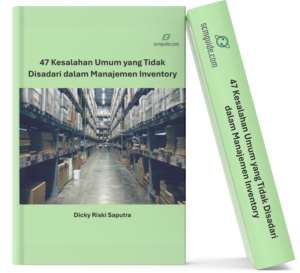In procurement, it’s crucial for officers to make sure the stuff they buy meets quality standards. But with many suppliers and different industries, judging quality can be tricky. Sometimes, procurement teams struggle to figure out if what they’re getting is really good.
In this post, we’ll talk about the challenges in assessing quality and ways to deal with them.
Before we go further into this topic, don’t forget to follow my LinkedIn account. You’ll get more helpful insights on supply chain management there.
Table of Contents
Difficulties in Assessing Quality
Lack of Expertise
Assessing the quality of specialized products or services in procurement can be tough, especially when officers aren’t experts in those fields.
Industries like aerospace, pharmaceuticals, or IT add more complexity with their technical details.
Procurement officers often struggle with understanding advanced manufacturing processes and detailed specifications needed for high-quality goods or services.
To handle this, teamwork is key. Procurement officers should team up with experts, whether from within the organization or outside.
By tapping into their specialized knowledge, officers can better understand the complexities of specialized products or services.
This collaboration not only helps in making better decisions but also promotes learning and improvement within the procurement team, ensuring they can keep up with the fast-paced and varied demands of today’s marketplace.
Subjectivity
Quality assessment in procurement often depends on personal opinions, which can complicate things.
Different people may have different ideas of what good quality means, leading to confusion within the procurement team.
This can slow down the process and cause uncertainty.
When there are disagreements about quality standards, it’s important for officers to encourage open discussions to find common ground.
To tackle this challenge, it’s crucial to set clear and fair evaluation criteria from the start.

Defining specific goals and expectations helps to reduce the impact of personal opinions and ensures a more consistent approach to assessing quality.
Also, promoting teamwork and transparency among the procurement team helps to resolve disagreements and keeps everyone focused on achieving shared quality goals, making the procurement process more efficient and reliable.
Limited Access to Information
In procurement, it’s tough when suppliers don’t share enough information about how they make their products or maintain quality. This lack of transparency makes it hard for officers to judge if what they’re buying is really good.
Without details about production methods, materials used, or quality checks, officers struggle to assess the true quality and reliability of what’s being offered.
To tackle this problem, it’s important to encourage suppliers to be more transparent.
Setting up clear communication channels and agreements that prioritize transparency can motivate suppliers to share the needed information.
Also, regularly checking suppliers and their processes can ensure they’re sticking to quality standards.
By working closely with suppliers and promoting transparency, procurement officers can overcome these challenges and make better decisions that match the organization’s quality goals.
You might also like:
- 10 Strategies to Overcome Data Processing Challenges for Supply Chain Teams Lacking Expertise
- 10 Ways Supply Chain Management Can Contribute to Business Profits
Inconsistent Standards
For procurement officers, dealing with different quality standards and regulations, especially with international suppliers, is tough.
Klik dan dapatkan ebook dari scmguide.com ini!
"47 Kesalahan Umum yang Tidak Disadari dalam Manajemen Inventory"
Manfaat yang Anda Peroleh:
🔍 Insight tentang kesalahan yang sering terabaikan
🔧 Tips dan trik praktis untuk perbaikan
📚 Bahasa sederhana yang mudah dipahami
Standards vary a lot between industries and regions, making it hard to set clear assessment criteria.
Cultural differences, diverse regulations, and industry-specific norms make this even more challenging, leaving officers struggling to come up with fair evaluation methods that fit different markets.
To tackle this problem, proactive steps are needed to make quality assessment smoother across global supply chains.
Officers can turn to international standards organizations and industry groups for guidance on quality norms and best practices.

Working closely with stakeholders from different regions and having open discussions can also help create flexible assessment frameworks that meet various quality standards while staying true to the organization’s goals.
By being flexible and adaptable in assessing quality, procurement officers can navigate international sourcing with more confidence, build better relationships with suppliers, and bring more value to the organization.
Handling the Challenges
Collaboration with Subject Matter Experts
To overcome the challenge of lacking expertise in assessing quality, procurement teams can rely on internal or external experts.
By teaming up with specialists from within the organization or seeking advice from outside consultants, officers can access a wealth of knowledge about specific products or services.
These experts understand industry standards, manufacturing processes, and quality checks, helping procurement teams make smarter decisions about what they’re buying.
Working with technical specialists not only fills gaps in knowledge but also improves the quality assessments.
Whether it’s understanding complex machinery, checking pharmaceuticals for compliance, or reviewing manufacturing procedures, these experts bring valuable insights that make evaluations more thorough and accurate.
By collaborating with these specialists, organizations can boost their ability to assess quality effectively and ensure that what they’re sourcing meets high standards.
Establish Clear Evaluation Criteria
Setting clear and fair evaluation standards is crucial in assessing quality during procurement.
This starts with identifying key performance indicators (KPIs) that matter for the specific product or service being bought.
These KPIs give measurable targets to judge quality, giving a structured way to evaluate. Whether it’s about product details, how things are made, delivery times, or keeping customers happy, having precise KPIs helps officers focus on what really counts.
Also, having benchmarks for suppliers to meet makes the assessment process clearer and fairer. By setting specific standards or thresholds for each KPI, procurement teams have a way to compare suppliers and make decisions.

These benchmarks act as a guide, making evaluations more objective and helping officers spot suppliers who consistently deliver top-notch quality.
By outlining clear criteria and benchmarks, procurement officers ensure a systematic and thorough approach to quality assessment, making the procurement process better overall.
You might also like:
- 10 Strategies to Succeed in Supply Chain without Formal Education
- Top 10 Supplier Relationship Management Best Practices for Sustainable Success
Supplier Audits and Site Visits
Regular supplier audits and site visits are essential for procurement officers to maintain quality in their supply chains.
These activities offer valuable opportunities to see firsthand how suppliers operate and control quality.
By visiting supplier sites and conducting thorough audits, officers can watch production, check quality measures, and ensure standards are met. This hands-on approach helps verify compliance and find areas to improve, making quality assurance efforts stronger.
Moreover, these audits and visits help officers assess suppliers’ ability to consistently deliver top-quality products or services.
By talking to staff, observing production, and checking quality systems, procurement teams can judge suppliers’ reliability and competence.
Keeping a close eye on supplier performance and doing regular assessments helps reduce risks, solve quality problems, and build strong, lasting partnerships with suppliers committed to delivering excellent quality.
Utilize Quality Assurance Tools
Using quality assurance tools and methods is vital for making procurement evaluations smoother and fairer. Techniques like statistical sampling help officers pick samples from a big group in a systematic way, giving them confidence in their quality assessments.
Quality control charts show data visually over time, helping spot trends, unusual things, and areas needing attention.
Also, Six Sigma methods offer a structured way to improve processes, focusing on reducing mistakes and variability for consistent quality results.
By using these tools, procurement teams can improve how they assess supplier performance, making it faster, more accurate, and more reliable.

Furthermore, these quality tools let officers keep an eye on quality all the time, spotting and fixing problems before they become big issues.
By having strong quality checks backed by data analysis, procurement teams can catch problems early in the buying process, stopping them from affecting later stages.
This proactive approach not only lowers risks but also encourages a culture of getting better all the time, boosting supplier performance and overall quality of what’s bought.
By using quality tools and methods well, procurement officers can make sure they consistently get top-quality outcomes for their organizations.
Continuous Improvement
Seeing quality assessment as a continuous process, not just a one-time thing, is crucial for procurement teams aiming for excellence. This means understanding that quality is always changing and needs constant attention and adjustment.
By actively asking for feedback from everyone involved, like end-users, other departments, and suppliers, procurement officers can learn a lot about how well their quality efforts are working.
Regular feedback helps spot new problems, changes in needs, and chances to do better, letting procurement teams make smart decisions and updates to their quality standards and practices.
Also, keeping an eye on supplier performance is key to keeping up quality standards over time.
By setting goals, tracking important signs, and checking suppliers regularly, procurement teams can see trends, find issues, and act fast to fix them.
When quality standards aren’t met, quick actions should be taken to solve the root problems and stop them from happening again.
This not only prevents quality problems but also builds a culture of responsibility, improvement, and teamwork between procurement teams and suppliers.
By seeing quality assessment as an ongoing journey of getting better, procurement teams can keep delivering top-notch quality and value to their organizations and stakeholders.
Conclusion
In the end, even though checking the quality of stuff from vendors can be hard for procurement officers, taking a proactive and organized approach can help.
By using expertise, setting clear standards, doing audits, and always looking for ways to do better, procurement teams can make sure they’re getting top-quality products and services.
This not only meets the organization’s standards but also adds value to it.
I hope you find it helpful!
Please share this article with your colleagues so they can also benefit. For more insights on supply chain management, follow my LinkedIn account. You’re free to use all articles on this blog for any purpose, even for commercial use, without needing to give credit.

 by
by 


